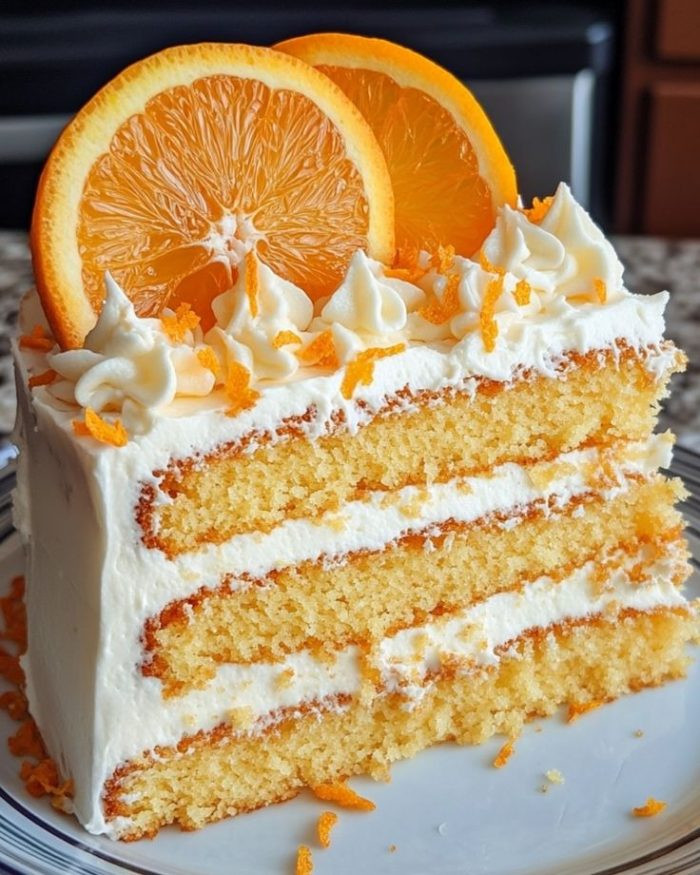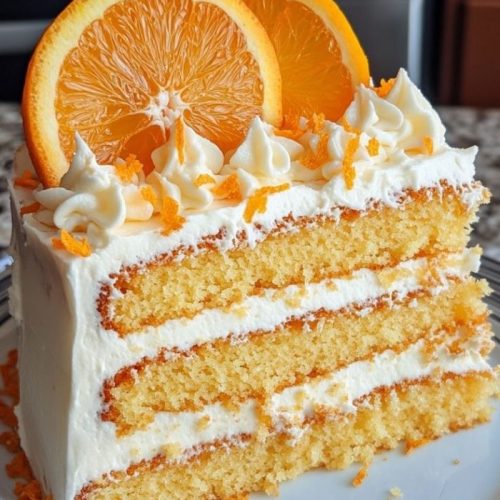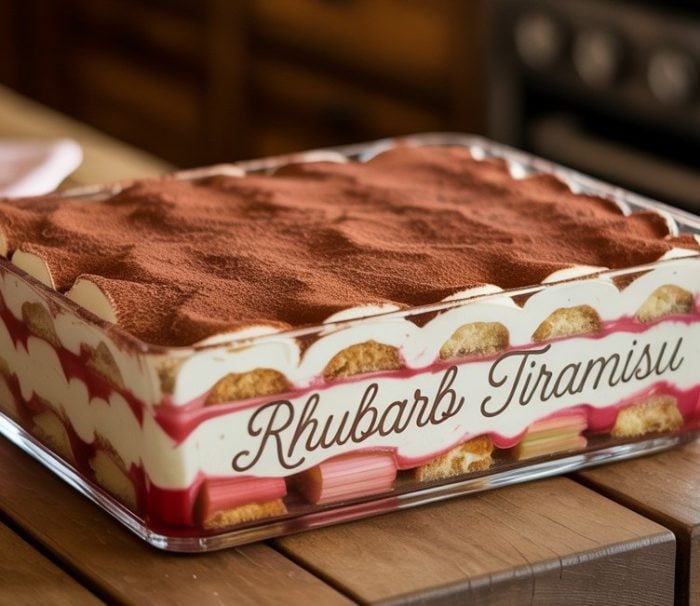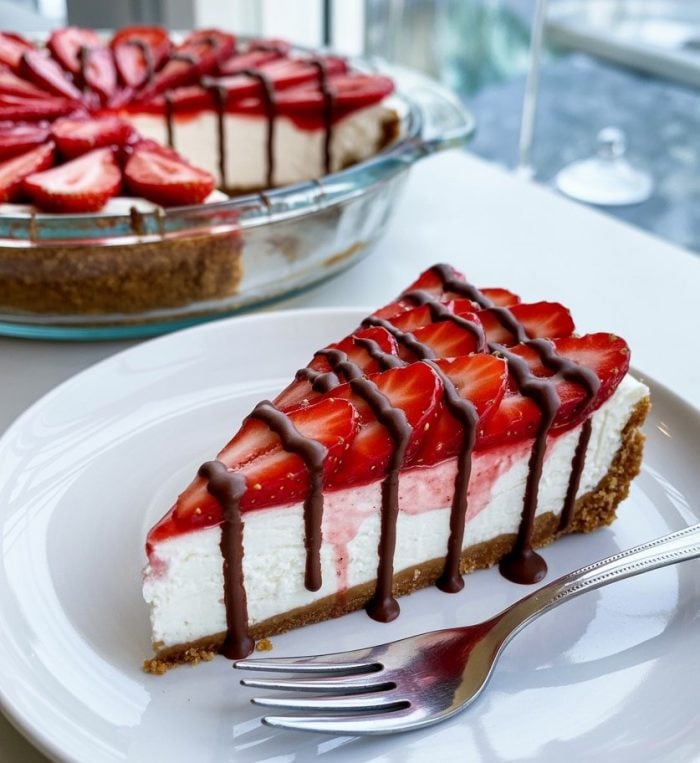I never meant to make this cake. Everything started on a Tuesday, the kind of Tuesday where you’re one sock short, the dishwasher gives up halfway through, and your daughter’s science project requires papier-mâché and glitter—by tomorrow.
I was rifling through the fridge for something cheerful and stumbled on a handful of oranges that no one had touched. Right next to them sat the last of the buttermilk from pancakes over the weekend. A lightbulb went off. Not just any cake. An orange velvet cake—bright, soft, luscious, and kissed with citrus. It sounded indulgent, but also felt oddly practical. I needed a win that day, and this cake delivered.
I baked it after dinner. While my husband helped with algebra and my youngest built a volcano in the living room, I whisked zest into butter and creamed sugar until it glowed like morning light. The aroma alone could fix a mood. When I finally sliced it open the next day—moist, vibrant, and slathered with orange-flecked cream cheese frosting—I knew this one was a keeper.
Now it’s our go-to for spring birthdays, Easter brunch, and random Thursdays that just need a little sunshine. The best part? It’s surprisingly easy, even with a family underfoot. And if you’ve got oranges, you’re already halfway there.

Short Description
This Orange Velvet Cake is a soft, moist layer cake infused with real orange juice and zest, frosted with tangy orange cream cheese frosting. Bright, creamy, and easy to make, it’s a citrusy twist on a classic.
Key Ingredients
For the Cake:
- 2 ½ cups all-purpose flour
- 1 teaspoon baking powder
- ½ teaspoon baking soda
- ½ teaspoon salt
- ½ cup unsalted butter, softened
- ½ cup vegetable oil
- 1 ¾ cups granulated sugar
- 4 large eggs
- 1 tablespoon orange zest (from about 2 oranges)
- ½ cup fresh orange juice
- 1 teaspoon vanilla extract
- 1 cup buttermilk
- Orange food coloring (optional, for vibrant color)
For the Orange Cream Cheese Frosting:
- 8 ounces cream cheese, softened
- ½ cup unsalted butter, softened
- 4 cups powdered sugar
- 2–3 tablespoons fresh orange juice
- 1 teaspoon orange zest
- 1 teaspoon vanilla extract
Tools Needed
- Two 9-inch round cake pans
- Parchment paper
- Electric mixer or stand mixer
- Mixing bowls (medium and large)
- Rubber spatula
- Cooling racks
- Fine grater or microplane (for zesting)
Cooking Instructions
Step 1: Preheat the Oven
Preheat to 350°F (175°C). Grease and flour two 9-inch round pans. Line the bottoms with parchment paper for smooth release.
Step 2: Mix Dry Ingredients
In a medium bowl, whisk together the flour, baking powder, baking soda, and salt. Set aside.
Step 3: Cream Butter, Oil, and Sugar
In a large bowl, beat the softened butter, oil, and sugar until light and fluffy—about 3–4 minutes on medium-high speed. It should look pale and whipped.
Step 4: Add Eggs and Citrus Flavor
Add eggs one at a time, beating after each. Stir in the orange zest, fresh orange juice, and vanilla. Add orange food coloring now if using.
Step 5: Alternate Wet and Dry
Add the dry ingredients in 3 batches, alternating with the buttermilk. Begin and end with the dry mix. Stir gently and stop once fully incorporated. Overmixing can make the cake dense.
Step 6: Bake the Layers
Divide the batter evenly between your pans. Smooth the tops and bake for 25–30 minutes, until a toothpick in the center comes out clean. Cool in the pans for 10 minutes, then transfer to wire racks.
Step 7: Make the Frosting
Beat softened cream cheese and butter until smooth and fluffy. Gradually mix in powdered sugar. Add orange juice, zest, and vanilla. Beat until airy and spreadable.
Step 8: Frost and Assemble
Place one cake layer on your serving plate. Spread a thick layer of frosting. Add the second cake layer and cover the top and sides. Use an offset spatula for a clean finish.
Step 9: Garnish and Chill
Top with extra orange zest or slices. Chill the cake for 15–20 minutes before slicing to get neat, clean cuts.
Why You’ll Love This Recipe
– Velvety texture with just the right crumb
– Cream cheese frosting with a citrus punch
– Easy to prep, even for weeknight baking
– Freezer-friendly layers
– Crowd-pleaser for both kids and grown-ups
Mistakes to Avoid & Solutions
1. Overmixing the batter
Problem: Tough or dense cake
Solution: Mix until the flour is just absorbed. Use a spatula to fold if needed.
2. Using bottled orange juice
Problem: Flat flavor and added bitterness
Solution: Use fresh-squeezed juice and zest. It makes all the difference.
3. Skipping parchment paper
Problem: Stuck layers that crumble
Solution: Always line the pan bottoms for easy release.
4. Too much food coloring
Problem: Bitter taste or unnatural color
Solution: Start with 1–2 drops, stir, and build up slowly if needed.
5. Frosting too thin or runny
Problem: Slides off or won’t hold shape
Solution: Add powdered sugar ¼ cup at a time until thick enough to spread.
Serving and Pairing Suggestions
Serve this cake:
– At brunch with mimosas or iced tea
– As a birthday centerpiece topped with whipped cream and berries
– Alongside fresh fruit salad or a citrus sorbet
– Family-style with forks in hand and seconds encouraged
– Decorated with orange peel curls or edible flowers for spring gatherings
Storage and Reheating Tips
Refrigerate: Store the cake in an airtight container in the fridge for up to 5 days.
Freeze Layers: Wrap unfrosted cake layers in plastic wrap and freeze up to 2 months. Thaw in the fridge overnight.
Reheat Slices: For a warm slice, microwave 10–15 seconds (frosting will soften slightly).
Frosting: If frosting becomes stiff, beat it again with a splash of orange juice.
FAQs
1. Can I use store-bought orange juice?
No. Fresh orange juice and zest are essential for flavor. Store-bought juice often tastes flat and too acidic.
2. What if I don’t have buttermilk?
Make a quick substitute: Add 1 tablespoon lemon juice or vinegar to 1 cup of milk. Let it sit 5 minutes.
3. Can I make this as cupcakes?
Yes! This recipe yields about 24 cupcakes. Bake at 350°F for 18–20 minutes.
4. How can I make this dairy-free?
Use plant-based butter, dairy-free cream cheese, and almond milk soured with lemon juice.
5. My cake domes in the middle—what am I doing wrong?
Try lowering the oven temperature to 325°F and baking a few minutes longer. This encourages even rising.
Tips & Tricks
– Zest before you juice—much easier and cleaner
– Room-temperature eggs and buttermilk mix better
– Chill the layers before frosting to reduce crumbs
– For a neater finish, do a crumb coat first: a thin layer of frosting, chilled for 10 minutes
– Use a serrated knife for slicing without squishing the cake
Recipe Variations
Blood Orange Velvet Cake
Swap regular orange juice/zest with blood oranges. The cake will have a slightly deeper color and more complex, berry-like citrus notes.
Chocolate-Orange Velvet Cake
Add ¼ cup cocoa powder to the dry ingredients and reduce flour by the same amount. Add ½ teaspoon instant espresso to enhance the chocolate. Skip the food coloring.
Orange Layer Loaf
Pour batter into two greased loaf pans instead of rounds. Bake for 45–50 minutes. Frost only the top for a more casual, tea-time version.
Lemon-Orange Twist
Use half lemon, half orange zest and juice for a dual citrus cake. It’s zestier and perfect for summer brunches.
Final Thoughts
I didn’t plan to fall in love with this cake, but that’s the thing about good recipes—they sneak up on you. This Orange Velvet Cake brought brightness into our kitchen, and into our moods, on an otherwise chaotic weekday. It reminded me that even with a packed schedule, sticky countertops, and a mountain of laundry,
I can still bake something beautiful. And it’s the kind of cake that makes everyone pause for a moment. You’ll hear the first bite before you see the smiles. It tastes like sunshine, feels like a hug, and somehow always leads to second helpings. Give it a try—your table (and your people) will thank you.

Orange Velvet Cake
Ingredients
For the Cake:
- 2 ½ cups all-purpose flour
- 1 teaspoon baking powder
- ½ teaspoon baking soda
- ½ teaspoon salt
- ½ cup unsalted butter softened
- ½ cup vegetable oil
- 1 ¾ cups granulated sugar
- 4 large eggs
- 1 tablespoon orange zest from about 2 oranges
- ½ cup fresh orange juice
- 1 teaspoon vanilla extract
- 1 cup buttermilk
- Orange food coloring optional, for vibrant color
For the Orange Cream Cheese Frosting:
- 8 ounces cream cheese softened
- ½ cup unsalted butter softened
- 4 cups powdered sugar
- 2 –3 tablespoons fresh orange juice
- 1 teaspoon orange zest
- 1 teaspoon vanilla extract
Instructions
- Set your oven to 350°F (175°C). Grease and flour two 9-inch round pans, and line the bottoms with parchment paper to help the cakes come out easily.
- In a medium bowl, whisk together the flour, baking powder, baking soda, and salt. Set it aside for now.
- In a large mixing bowl, beat the butter, oil, and sugar together for 3–4 minutes until the mix is light, fluffy, and pale in color.
- Add the eggs one at a time, mixing well after each. Stir in the orange zest, fresh orange juice, and vanilla. If you want a brighter orange color, add a few drops of food coloring here.
- Add the dry mix in three parts, alternating with the buttermilk. Start and end with the dry mix. Mix gently—just until it’s combined. Don’t overmix or the cake might turn out dense.
- Pour the batter evenly into the pans. Smooth the tops and bake for 25–30 minutes, or until a toothpick in the center comes out clean. Let them cool in the pans for 10 minutes, then move them to wire racks.
- Beat the cream cheese and butter together until smooth. Add the powdered sugar slowly, then mix in the orange juice, zest, and vanilla. Keep beating until the frosting is light and fluffy.
- Place one cake layer on a serving plate. Spread a thick layer of frosting on top. Add the second layer and cover the whole cake with frosting.
- Sprinkle more orange zest on top or add orange slices for decoration. Chill the cake for 15–20 minutes before cutting—it helps keep the slices clean and neat.



